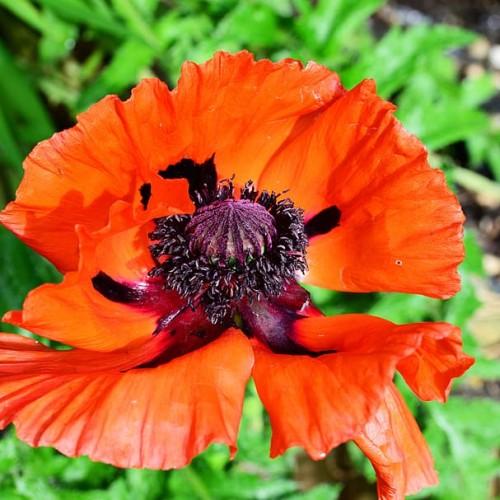
oriental poppy
Papaver orientale 'Beauty of Livermere'
Cycle:
Herbaceous Perennial
Watering:
Average
Hardiness Zone:
3 - 7
Flowers:
Flowers In Spring
Sun:
Full sun
Soil:
Well-drained
Fruits:
Fruits In Summer Ready In Summer
Leaf:
Yes
Growth Rate:
High
Maintenance:
Moderate
Drought Tolerant:
Yes
Care Level:
Medium
watering
Water Oriental Poppies deeply and regularly during active growth. Aim to keep the soil evenly moist throughout the growing season. Water the soil at least once a week, applying 1 inch (2.5 cm) of water in areas with light or average rainfall; 2 inches (5 cm) of water in areas with heavy rainfall. Avoid overwatering or areas may become overly soggy. Poppies will need to be watered more frequently in areas of intense heat and direct sun.
sunlight
Oriental poppies (Papaver orientale 'Beauty of Livermere') require at least 6 to 8 hours of direct sunlight per day, ideally during the morning and early afternoon hours, to thrive. They prefer full sun exposure and their flower petals will become more vibrant with more exposure. During the summer, they may require some shade in the afternoon when the sun is most intense. These flowers thrive best in the cooler spring and autumn months when the temperatures are milder and the air is moist.
pruning
Oriental poppies should be pruned shortly after blooming in the spring. Cut back all the spent flower stalks, but leave the foliage alone, as it provides energy for the following year. Prune lightly, leaving a few inches of stem on each plant. Deadheading will help encourage a second flush of blooms in late summer. If older plants become unkempt, a shearing back of the entire plant can be done in late summer to control the size and shape of the plant.
